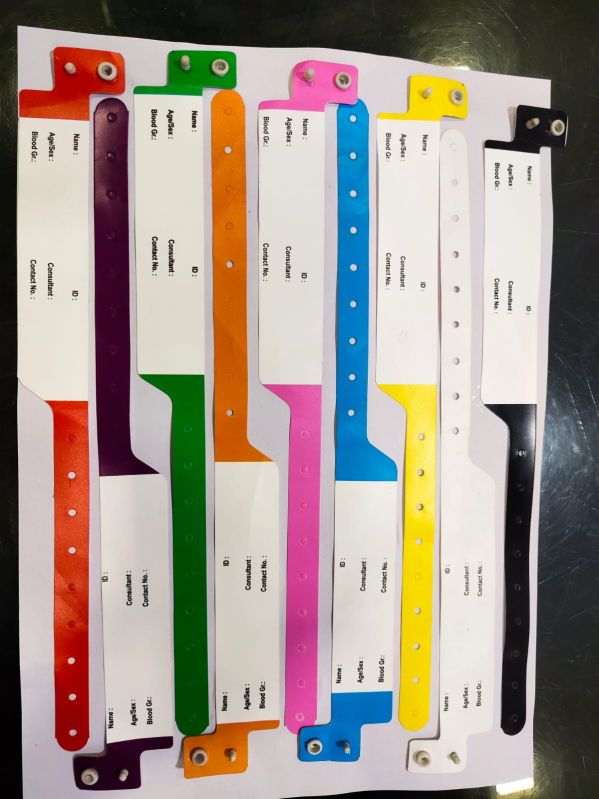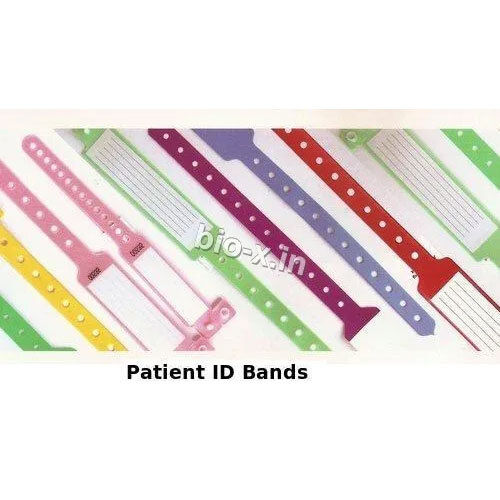How to Choose the Right Patient Wristband for Your Healthcare Facility
How to Choose the Right Patient Wristband for Your Healthcare Facility
Blog Article
Discovering the Different Kinds Of Patient Identification Band Utilized in Clinical Facilities
In the complex world of medical care, the critical role of Patient Identification bands frequently goes undetected. These bands, differing from simple paper wristbands to advanced RFID bands, develop the foundation of Patient safety and security protocols, making certain precision in Patient Identification.
Recognizing the Significance of Patient Identification Bands
While they might seem like plain devices, Patient Identification bands play an important role in medical facilities. These bands act as a crucial tool for verifying Patient identity, stopping clinical mistakes connected to misidentification. The bands generally display crucial info such as the Patient's name, age, blood group, and any kind of known allergies. They enable medical care specialists to swiftly access this important details, thus promoting timely and exact medical therapy. Patient Identification bands additionally aid in improving administrative tasks, guaranteeing precise record-keeping and billing. In spite of their simpleness, these bands personify the concept of Patient safety, a foundation of high quality health care. Without them, the danger of clinical errors, and consequently, Patient damage, might dramatically enhance.
Traditional Paper Wristbands: Their Use and Limitations
Typical paper wristbands have actually been a staple in Patient Identification across various medical centers. While their use is widespread, they nurture particular restrictions that may impact their performance in Patient administration. This section will certainly concentrate on the extent of their application and the integral drawbacks connected with their usage.
Paper Wristbands: Use Extent
In the world of Patient Identification, paper wristbands have long held an important duty. These bands are generally utilized in outpatient setups, where the Patient's stay is short-lived. In spite of advancements in modern technology, the humble paper wristband continues to be a affordable and trusted service for Patient Identification in numerous medical care situations.
Limitations of Paper Wristbands
Regardless of their prevalent use, paper wristbands are not without their disadvantages. Their physical longevity is just one of the significant limitations. Direct exposure to water, sweat, or harsh handling can render them unreadable or perhaps trigger them to break down. Additionally, paper wristbands usually lack the technological capacities of even more modern alternatives, such as barcoding or RFID chips, limiting their capability to simply displaying composed details. The failure to update or customize the data on the wristband is another drawback. Additionally, if the information is transcribed, clarity can be jeopardized, resulting in possible misidentification. Paper wristbands can cause discomfort or skin inflammation to some clients, specifically when put on for prolonged periods.
Barcoded Wristbands: Improvements in Patient Identification
While Patient Identification has long been a critical aspect of health care, the advent of barcoded wristbands signifies a substantial jump ahead. These bands take advantage of the simpleness of barcoding modern technology, enabling Patient information to be promptly scanned and accessed. They improve the rate and accuracy of Patient Identification, reducing the threat of clinical errors associated to misidentification. Barcoded wristbands are economical, very easy to generate, and remove handwriting errors usual with hands-on systems. Nevertheless, they are not without restrictions. While they supply renovations over traditional bands, the barcode can become smudged or used, making it unreadable. Regardless of this, barcoded wristbands stay a crucial device in contemporary medical care setups, symbolizing the crossway of technology and Patient treatment.
Radio Regularity Identification (RFID) Bands: a Step Towards Futuristic Medical Care
The advancement of Patient Identification bands has produced the emergence of Superhigh frequency Identification (RFID) Bands (patient identification band). These cutting-edge devices existing crucial benefits for healthcare centers, using a much more effective and highly progressed means of Patient Identification. The execution of RFID in healthcare is a considerable action in the direction of an extra advanced technique to Patient monitoring and safety
Recognizing RFID Bands

RFID Bands: Secret Advantages
Embracing a future where innovation and healthcare merge, radio regularity Identification bands provide a number of key advantages. Primarily, these bands boost Patient security by giving exact, rapid Identification, thereby minimizing clinical errors. RFID bands can save a huge quantity of Patient data, including clinical history and allergies, allowing customized care. They likewise improve administrative jobs, as the automated information entry replaces hands-on procedures, improving efficiency and lowering paperwork. RFID bands supply real-time tracking Discover More Here of people, important in high-risk atmospheres such as surgery or intensive care. Finally, these bands are sturdy and resistant to environmental factors, guaranteeing regular capability. Generally, RFID bands represent a considerable improvement in Patient Identification technology, profiting both clients and health care suppliers.
Implementing RFID in Health Care
These bands provide a smooth means to track and recognize clients, guaranteeing their safety and security and boosting efficiency in treatment procedures. RFID bands lower clinical errors by giving accurate Patient Identification, which is vital in avoiding misdiagnosis or wrong medication management. Hence, the implementation of RFID bands see here now is a considerable step in the direction of enhancing Patient safety and health care shipment.

Color-Coded Wristbands: Aiding in Quick and Accurate Medical Diagnosis
In the bustling setting of a clinical facility, color-coded wristbands have actually become important tools for swift and precise Identification of an individual's medical problem. These wristbands, worn by clients, carry certain shades that represent various medical problems or conditions. Red can suggest allergy risks, while yellow could symbolize an autumn risk. This system is made to provide instant aesthetic cues to health care companies, improving Patient security and care top quality. In emergency situation situations, the use of these wristbands permits fast decision-making. Nevertheless, the efficiency of color-coded wristbands relies on the harmony of color interpretation across health care institutions, needing typical criteria for regular application.
Techniques for Efficient Implementation and Administration of Patient ID Bands
Accomplishing optimal usage of Patient Identification bands demands a well-structured strategy for their implementation and management. The first step involves training all wellness personnel on the significance of correctly using and reviewing these bands. Health centers should standardize the usage of ID bands throughout all departments, making certain uniformity and minimizing discrepancies. Normal audits ought to be performed to validate adherence to plans and to rectify any type of incongruities. Patient education is additionally crucial; individuals have to understand the function of the bands and the requirement for their constant wear. patient identification band. It's vital to have a back-up plan in location, such as barcode scanning or biometrics, to make sure that Patient Identification is never my link endangered.
Verdict
Patient Identification bands are important in medical centers to ensure safety and precision. Reliable implementation and administration of these bands can dramatically decrease clinical mistakes, increase effectiveness, and boost overall Patient care.
These bands, differing from simple paper wristbands to innovative RFID bands, create the backbone of Patient security procedures, making certain precision in Patient Identification.The development of Patient Identification bands has actually brought concerning the emergence of Radio Frequency Identification (RFID) Bands. In general, RFID bands represent a considerable improvement in Patient Identification modern technology, profiting both people and medical care service providers.
RFID bands minimize clinical mistakes by giving exact Patient Identification, which is critical in preventing misdiagnosis or wrong medicine administration. Patient education is likewise crucial; people must understand the objective of the bands and the requirement for their continuous wear.
Report this page